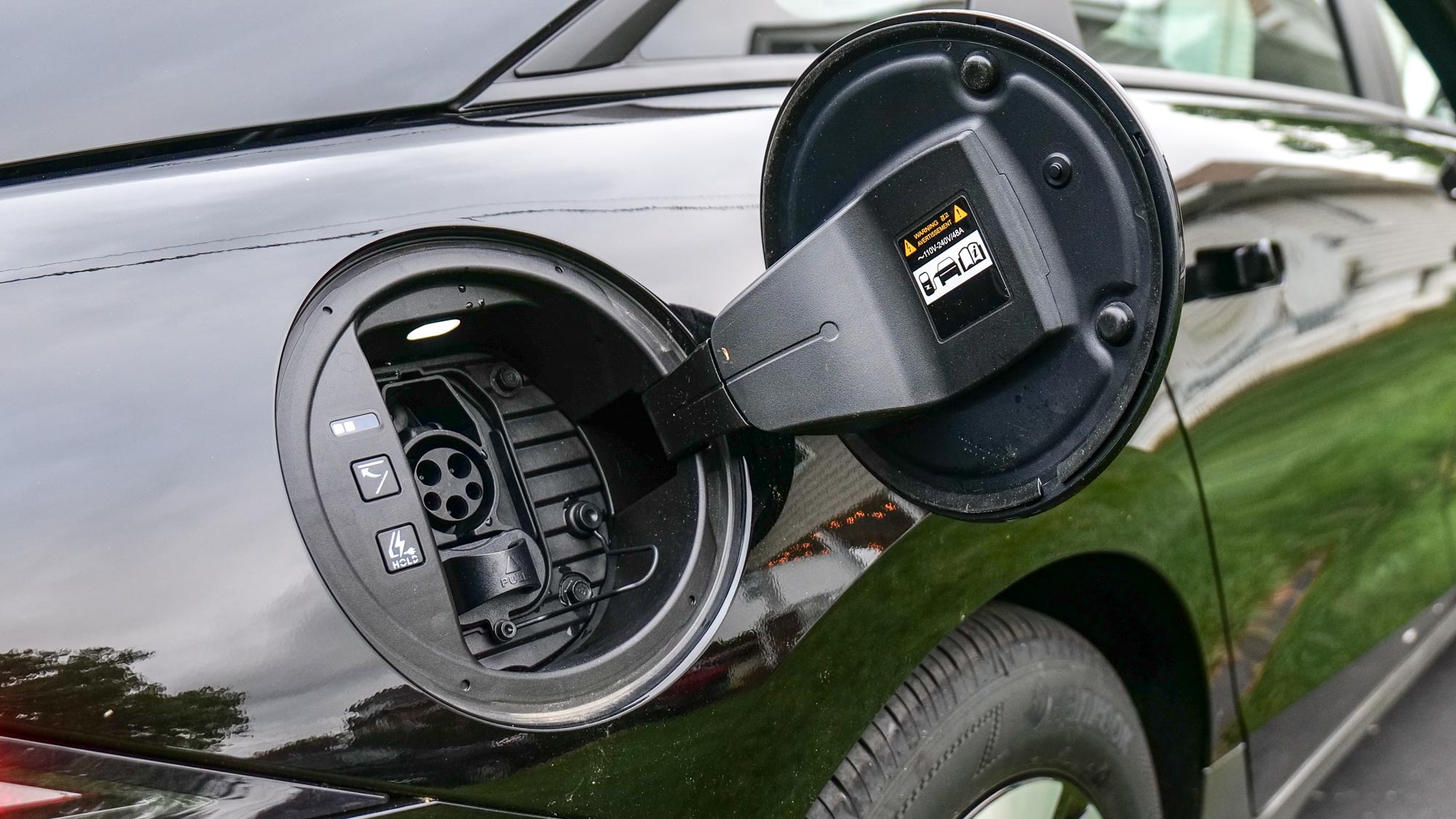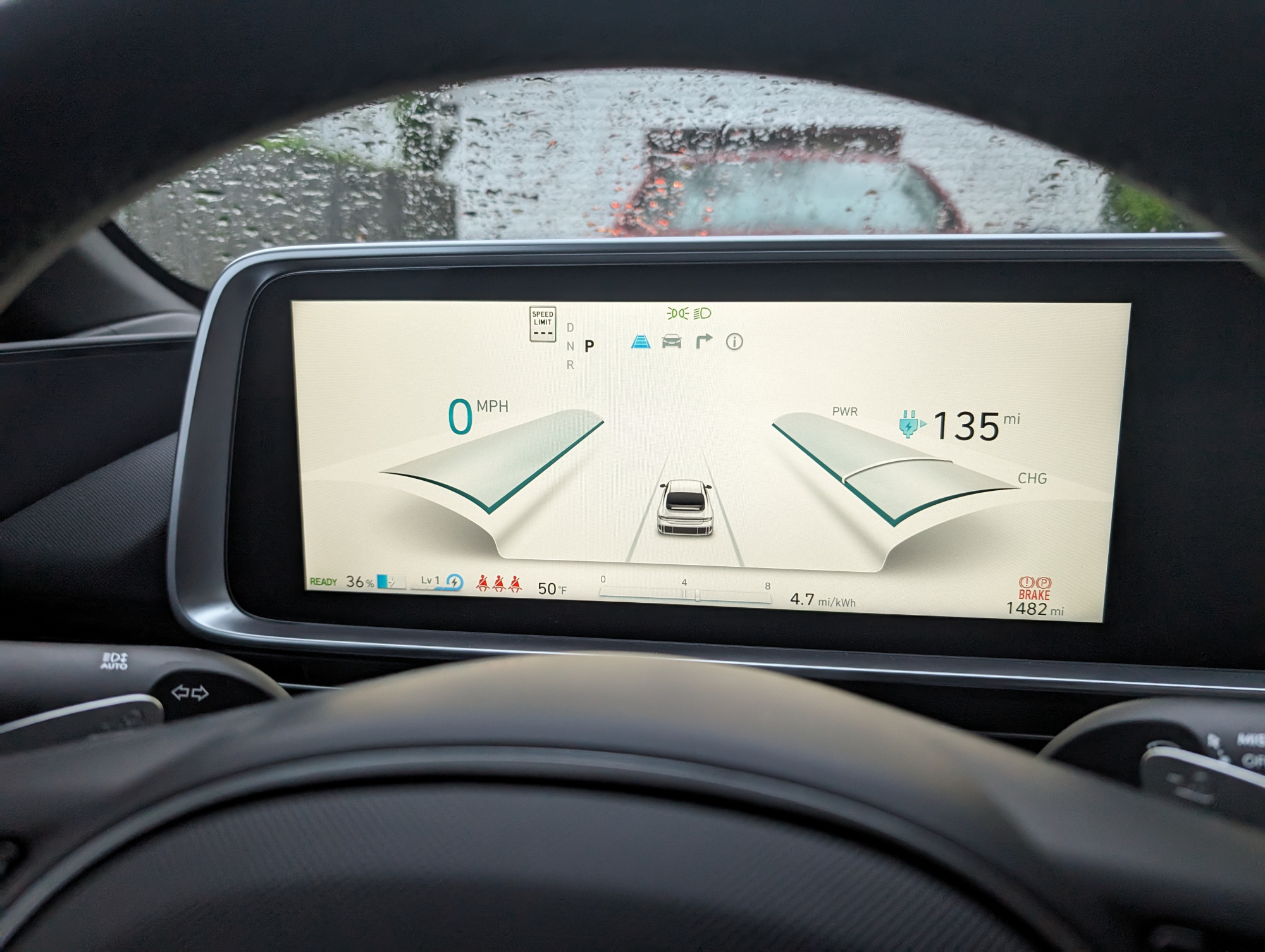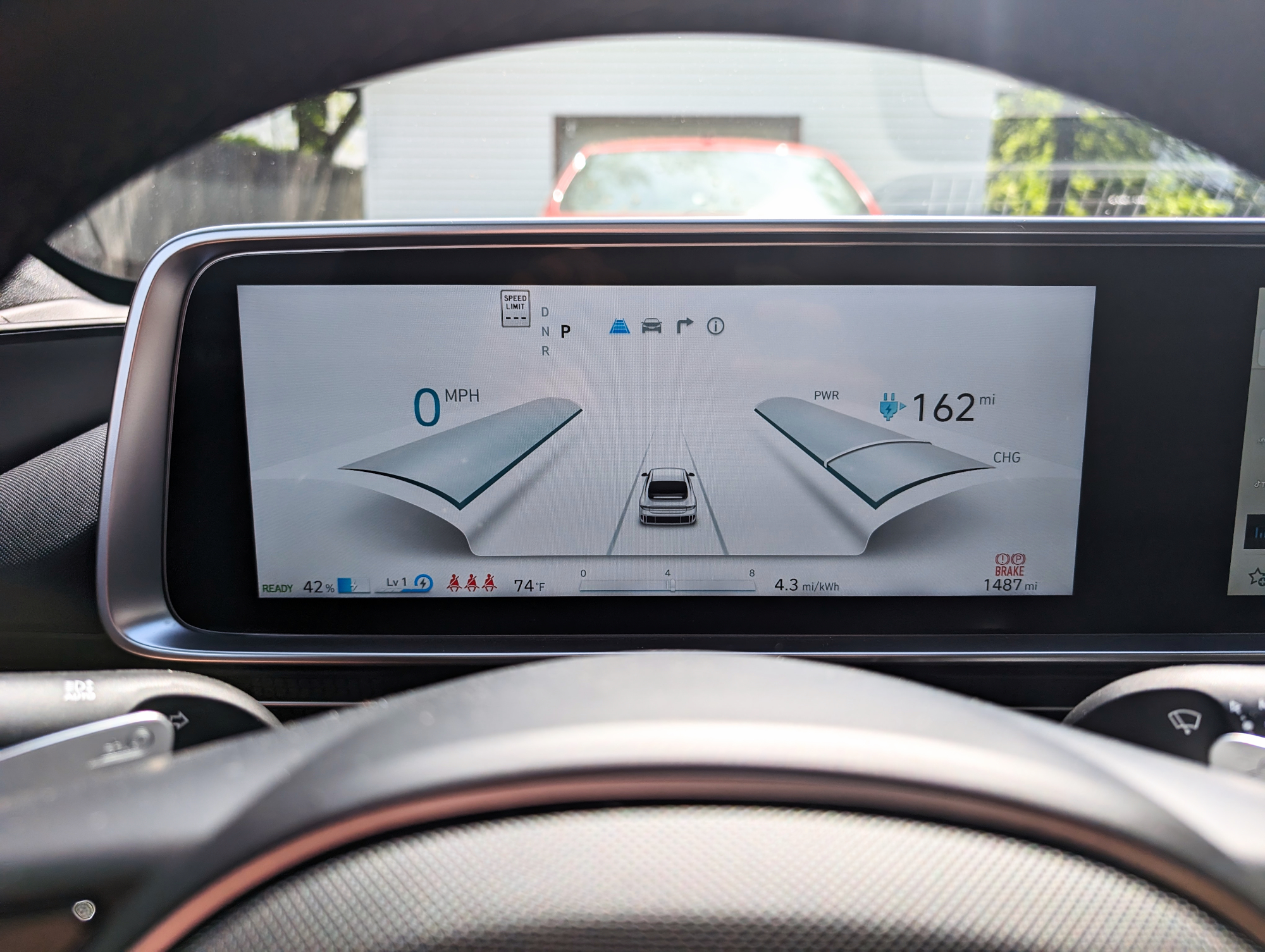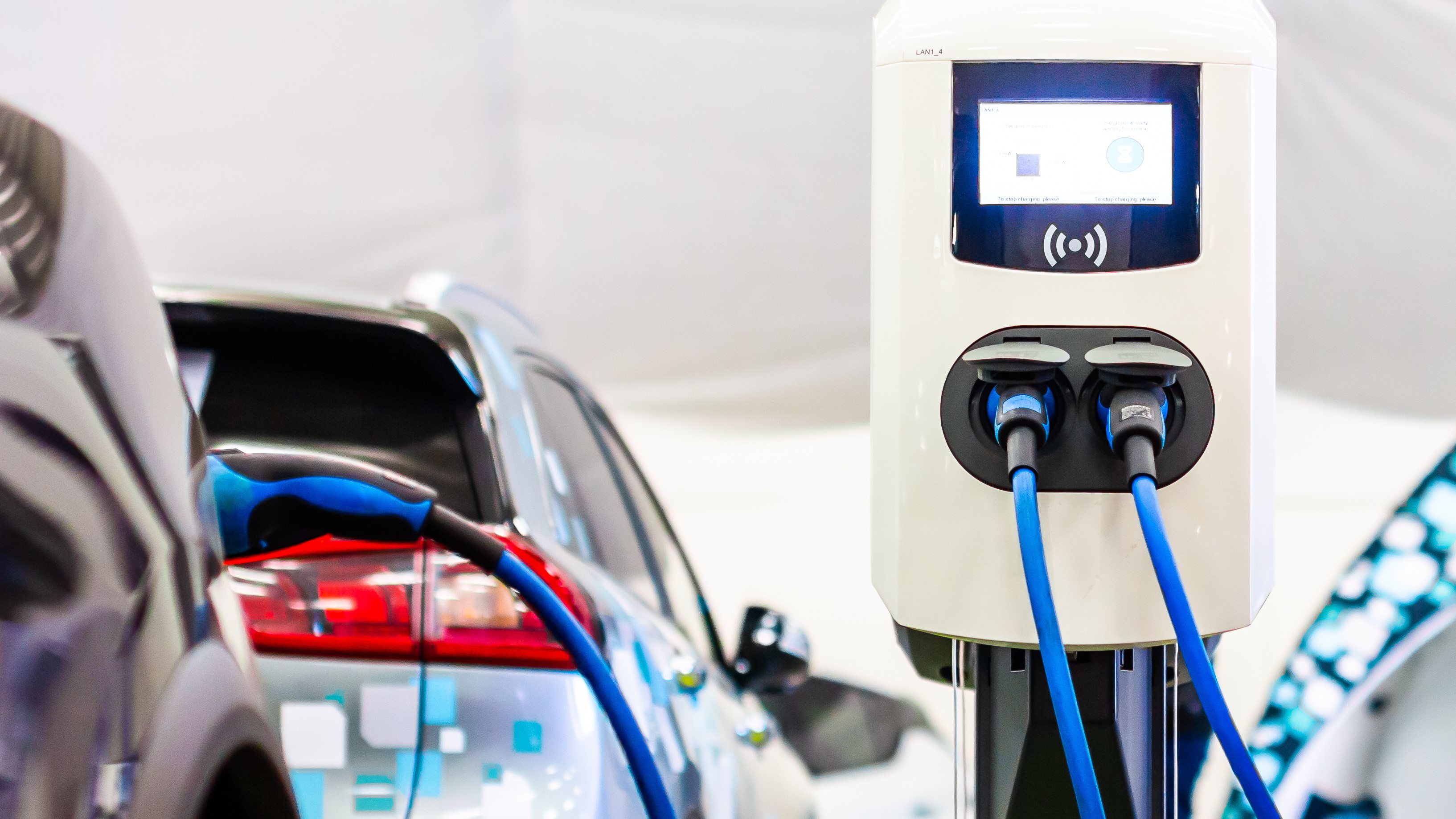I tried charging an EV at home and it was a shock I wasn't expecting
Patience is definitely a virtue here

In my deeper dive into the world of electric vehicles, I’m continually learning more about the quirk and nuances that surround them. One of the common misconceptions for first time EV buyers is that you’ll need special equipment in order to charge the vehicle at home. That’s not true because EVs come with a Level 1 charger that lets you conveniently plug into a standard household outlet.
Even though I test drove a Lexus TX550H+ PHEV for a week, I was unable to charge its battery because it unfortunately didn’t come with a charger I could use at home. But luckily I didn’t have to wait long because I got to test drive a Hyundai Ioniq 6 sedan that came with one. After driving it around for the first couple of days to get its battery level down, I finally needed to charge it at home by the third day.
One of the main incentives for me to drive an all-electric vehicle is how they can take me away from paying the outrageous pricing on gasoline this summer, and with Memorial Day weekend here, gas prices are up just about everywhere I’ve checked. However, I was in store for a shock after charging the Hyundai Ioniq 6 at home for the first time. Here’s why.
Level 1 charging is convenient, but it takes time


When I finally plugged the Hyundai Ioniq 6 into a 120V outlet outside of my home, the battery level was 36% with an estimated range of 135 miles. Fast forward 14 hours and 33 minutes later, I proceeded to get into the Ioniq 6 only to realize it managed to get to just 42% overnight — roughly giving it a range of 162 miles. This tacked on an estimated 27 additional miles from where it started the previous night.
I think this is worth pointing out because there needs to be an expectation put forward for first time EV buyers. I was certainly shocked by the results after charging it overnight, so while Level 1 charging is convenient, it would take days for it to fully charge due to the slower charging speed. However, if your daily commute amounts to less than 20 miles in total, charging at Level 1 speed shouldn’t be a problem.
I don’t mind the long wait because my daily commute to work involves me driving to the train station each day, which is a little over 3 miles one way — so a charge overnight at Level 1 would be more than what I need. And since I charged it overnight, the rate for electricity consumption is much less for me versus charging it during peak hours (usually from 9:00 a.m. to 9:00 p.m.)
Although, I know that others can’t afford to wait that long, especially if they have a longer commute.
Sign up to get the BEST of Tom's Guide direct to your inbox.
Get instant access to breaking news, the hottest reviews, great deals and helpful tips.
Better charging efficiency at a station

If you absolutely want a faster charge time at home, you’ll need to invest in a Level 2 charger because it takes 6 hours and 55 minutes to get the Ioniq from 0% to 80%. However, there’s the additional cost involved with installing the proper hardware at home — plus, you may need to obtain a permit from your city or town to install one.
That’s why there are more EV charging stations cropping up everywhere to allow drivers to quickly charge their EVs. In my experience charging a Ford F150 Lighting at a Tesla Supercharger location, you’ll definitely pay a lot more than you would at home charging your EV — but the charging efficiency is vastly better than Level 1 charging at home.
For example, the Ioniq 6 can get up to an 80% charge in 73 minutes using a 50kW charger. And if you can somehow find a station around you that offers 350kW charging, it would take 18 minutes worth of charging to get the Ioniq 6 to 80%. I often tell prospective and first time EV drivers that they should reserve charging at a station when it’s an emergency or if they plan on driving long distances. For the majority of the time, it’s best to charge at home to reap the most benefits of saving money.
More from Tom's Guide

John’s a senior editor covering phones for Tom’s Guide. He’s no stranger in this area having covered mobile phones and gadgets since 2008 when he started his career. On top of his editor duties, he’s a seasoned videographer being in front and behind the camera producing YouTube videos. Previously, he held editor roles with PhoneArena, Android Authority, Digital Trends, and SPY. Outside of tech, he enjoys producing mini documentaries and fun social clips for small businesses, enjoying the beach life at the Jersey Shore, and recently becoming a first time homeowner.
-
branchms The level onr charger that's comes with the Ioniq 6 is terrible the default setting is very low amps. If you change the setting you will get closer to 60 miles over night which is much more like what you'd need for a daily commute. I love my Ioniq 6. There are some really great deals on level 2 chargers all the time.Reply -
nigelboor What did you expect? Treat the domestic plug in as an emergency only. 120V is barely adequate to charge an iPhone.Reply
A dedicated home charger will fill your battery overnight and should be factored in when you buy the car unless you are lucky enough to have one at home already. -
Elterrible My 220 was run to the front of my house and my juice box was about $500. I can charge an Ioniq 5 or 6 in about 6 to 7 hours and it will be at 100%.Reply
If your house has a modern electrical box and at least a 200 AMP capacity, it is under $1300 to be setup to use the EV. My house was upgraded when I went Solar and now I drive for free too. -
ScootzB This should not have been a shock. Level 1 charging can work if you have a short commute and if your charge every night to replace the miles you drove that day. Otherwise, you need a Level 2 charger. I have a Bolt EUV. GM gave me a $1,000 credit toward having a Level 2 charger installed (or more accurately, the outlet for it) in my garage. The credit fully covered the cost. I live in an old house and the best we could do was a 20 amp dedicated circuit. So I bought a 16 amp Level 2 charger and I have no complaints about charging overnight.Reply -
DaveG11 My Tesla gets 5 miles of range per hour of charge on level I. What you haven't said is if you are plugging directly into the socket or using an extension cord. And also all extension cords are not the same. They come in different gauge (thickness) wires. I use a 10 gauge (thickest ext cord available) which means it can deliver more current for a further distance. It delivers 12 amps from the socket to the extension cord to my level I adapter to the car. If you aren't getting 5 miles per hour range..you're doing it wrong.Reply -
Apistofirered Level 1 is not shocking that it's slow. It should only be used for when you really really need to add a few miles.. Whether it be an emergency or just a small commuteReply
If you're going to buy an EV, you should really invest in a level 2 charger as well. Also, check local incentives. My city was offering a rebate at the time and I ended up paying $0 for the charger and installation. They covered the permit cost as well. Some car companies also cover installation as well and I could have also went with GMs offer if I had to -
bjrosen If you can charge at home you should and it should always be done with a Level 2 EVSE. If you can afford to buy the car you can afford to put in a proper EVSE. It's not expensive. My electrician charged me $750 to run a 60A 240V line and hook up my 11KW Tesla EVSE. That's the same as the optional paint colors for a Tesla.Reply
Unless you have no means of charging at home you should never use Superchargers as your primary means of charging, those are for road trips. It's bad for the battery and it's a huge waste of time. It's not just the time it takes to charge, it's the time it takes to get to and from the Supercharger. Plugging in at home is the biggest benefit of owning an EV because it only takes 10 seconds of your time, there is no weekly gas station trip. Going to a Supercharger for your weekly charge is worse because there are fewer of them so they are not as likely to be conveniently located as your local gas station. -
omglolwut If you were shocked, that's on you. If you had done any research, you would understand some of the basics.Reply
In particular wattage. Watts = Volts x Amps. In the US, 120V outlets provide 15 amps at best. Do the math and that equates to 1800 W. The Ioniq 6 has > 77 kWh capacity, which is on the high-end of EVs today. That approximates to 43 hours to charge from 0 to full, assuming constant rate.
For an Ioniq 6, you should be charging at home on a 240 V connection @ 48 amps (using a 60 amp breaker). This yields 11.5 kW which is > 6 times faster than a Level 1 and would charge your Ioniq 6 in less than 7 hours, which is plenty for 99% of folks for their day-to-day. If you need faster for the occasional road trip, there are Level 3 fast chargers available which are typically another 8x faster than Level 2.
TL;DR: Have a Level 2 charger installed at home if you're going to buy an EV or rely on those that are publicly available. Expecting to use Level 1 as your primary is just plain silly. -
oldhaapi The range of the Chevy Volt is around 35 miles on electric, and as you found, that's about what you can charge with an L1 overnight. Makes sense now, eh?Reply
Just had an estimate done for L2, and it was around $1000 to add a charging unit in our garage to our 150 amp panel. -
Teddan96 My initial reaction was the same as many of the commenters. However, after thinking about it, I thought a few points needed clarification.Reply
There are definitely situations where people can get by with just a Level 1 charger and their home's power outlet. Many homes, especially garages, have 20A breakers for outlets. You can check your breaker box to see how much capacity you have. However, the capacity of the Level 1 charger depends on the brand of the charger and the settings in the car. Most should allow you to get 3-5 miles of added range per hour of charging.
Chargers have no idea what the capacity is of your wiring or your breaker. However, for safety reasons, if you use an extension cord with a charger, you want to ensure it is rated for the current load and length of the cord. For example, a 10ft cord carrying 20 amps doesn't require as thick wire as a 100ft cord carrying the same amperage. See the charts at this link.
In general, if your daily drive is less than about 30 miles (this varies a lot depending on car, charger and settings), you could get by with Level 1 charging if you plug in whenever you're home. You'd want to keep the car charged to 70-80%, run it down during your daily drive, then bring it back up when not in use. Level 1 chargers will give you 3-5 miles per hour of charging, and since most cars sit at home for 8-12 hours per day, you'll be able to replenish 24 (=3x8) to 60 (=5x12) miles of range. If you keep the car at about 80%, you'll have plenty of range if you need to drive more one day. Conversely, if you don't drive one day, you'll be able to add more range. So, for people with short daily usage (i.e. an around town vehicle for shopping etc.), there's little problem sticking with a Level 1 charger. I did this for several years with a couple different EVs and a Chevy Volt (that I only ran on battery 99% of the time). It worked great but required some planning.
However, the convenience of having the speed of a Level 2 charger is well worth the added expense for most EV owners. Being able to fully charge over night is very convenient so you do not have to balance your daily charging regimen with your usage. You just plug it in when the range drops below your comfort zone, knowing that you'll be back up to full capacity the next morning.
